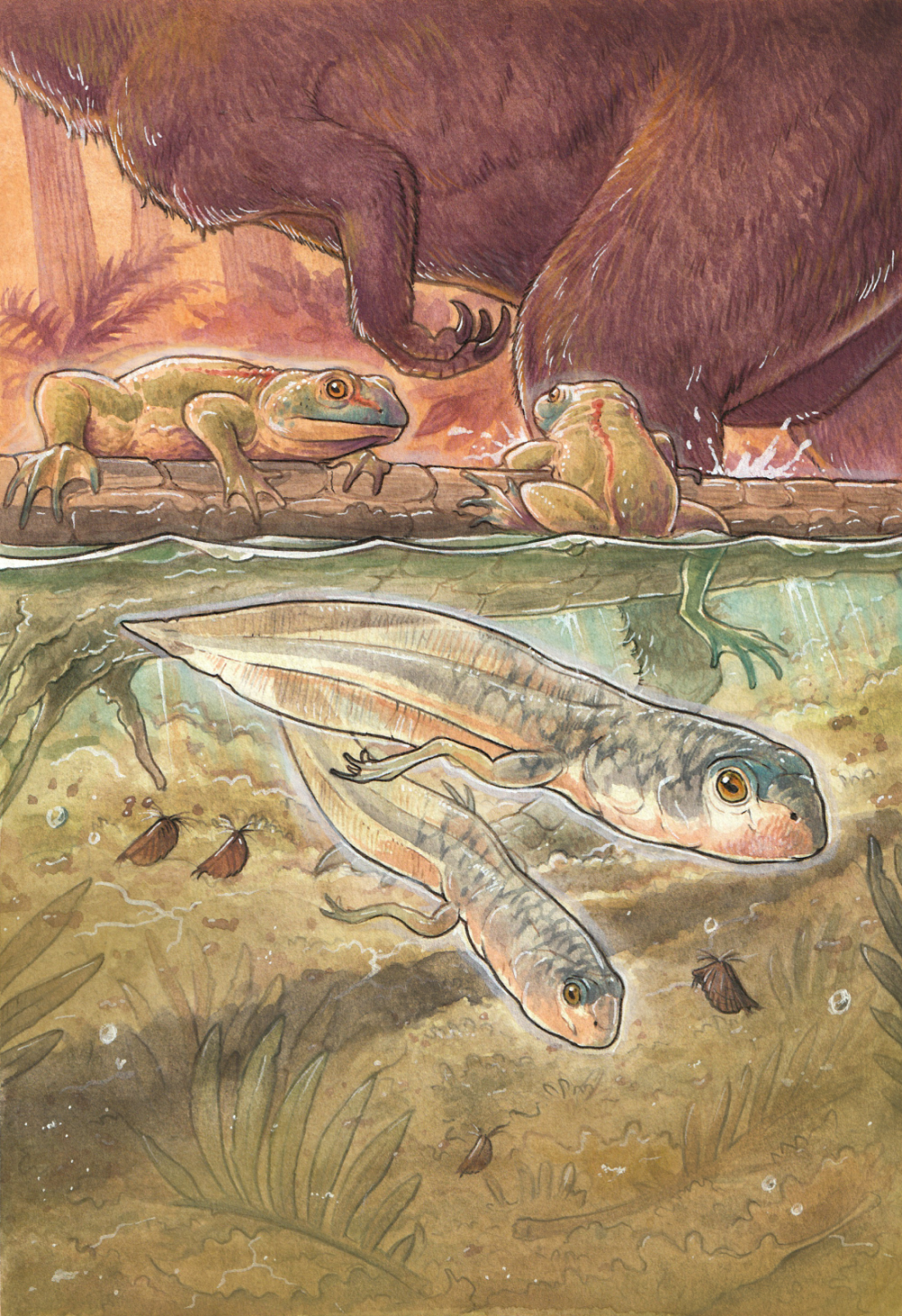When we think of the Jurassic, images of giants come to mind. Giant dinosaurs, giant pterosaurs, giant frogs… If the latter had never occurred to you, might we offer up the oldest known tadpole on record? And yes, it’s an absolute giant.
A fossil tadpole has been found that dates back 161 million years, an especially remarkable find as it breaks the record for old tadpoles, with the previous title-winner hailing from the Cretaceous around 145 million years ago. This new discovery now kicks back the record of tadpoles on Earth to the Middle Jurassic (168–161 million years ago) with an incredible fossil that was retrieved from what we now call Patagonia. We know tadpoles go back even earlier because we’ve found frogs as early as the Late Triassic (around 217–213 million years ago), but this is the first time we’ve had a fossil to show for it.
It provides the first evidence for the presence of a tadpole followed by a drastic metamorphosis on the life cycle of anurans from the very beginning of the evolutionary history of the group.
Dr Mariana Chuliver Pereyra
“The habitat wherein this tadpole lived was probably a shallow pond, which dried out periodically, since it was under variable climatic conditions,” said lead author Dr Mariana Chuliver Pereyra of the La Plata National University to IFLScience. “As with most extant species, not all tadpoles succeed in metamorphosing, so many of them die when the ponds dried out.”
“Our tadpole probably died naturally, and after its death was covered by volcanic ash and silt, which is a fine grain sediment. The deposition of these fine sediments promoted an exquisite preservation of the specimen, which lasted more than 160 million years.”
It’s thought to be the tadpole of the Jurassic frog Notobatrachus degiustoi, a now-extinct amphibian that is the most well known from the era. Like anurans (frogs and toads) alive today, it had a biphasic life cycle that began with an aquatic larval form – that’s our wormy tadpole – and ended as an adult frog, and now we’ve found one of its tadpoles. It’s not only smashing records, but also teaching us about the evolution of frogs, toads, and their curious metamorphosing ways.
“One of the most groundbreaking aspects of this finding is that it provides the first evidence for the presence of a tadpole followed by a drastic metamorphosis on the life cycle of anurans from the very beginning of the evolutionary history of the group,” Chuliver Pereyra added. “Moreover, we proved that the presence of a larval stage with filter-feeding habits was a key trait that was already present in the anuran life cycle more than 160 million years ago.”

Just some Jurassic frogs and their big babies.
Image credit: Gabriel Lío
Despite its great age, the tadpole has retained its head, most of its body, and part of the tail. You can also see its eyes, nerves, and a forelimb, meaning the tadpole was on its way to becoming a frog when it met its untimely end. Bad news for the tadpole but good news for our scientists, as they had enough material to work with in order to establish traits the tadpole shared with baby frogs alive today.
Plus, at a whopping 16 centimeters (6.3 inches) it was the very large larval form of a big-ass frog – one of the few on record to be big during both life stages (though the paradoxical frog is even weirder) – giving us an opportunity to learn more about gigantism within the anurans.
“This finding has dual importance because it represents the oldest-known tadpole and, to our knowledge, the first stem-anuran larva,” wrote the authors. “Its exquisite preservation, including soft tissues, shows features associated with the filter-feeding mechanism characteristic of extant tadpoles.”
“Notably, both N. degiustoi tadpole and adult reached a large size, demonstrating that tadpole gigantism occurred among stem-anurans. This new discovery reveals that a biphasic life cycle, with filter-feeding tadpoles inhabiting aquatic ephemeral environments, was already present in the early evolutionary history of stem-anurans and has remained stable for at least 161 million years.”
The study is published in Nature.
Source Link: The Oldest Known Tadpole From 161 Million Years Ago Is Absolutely Massive